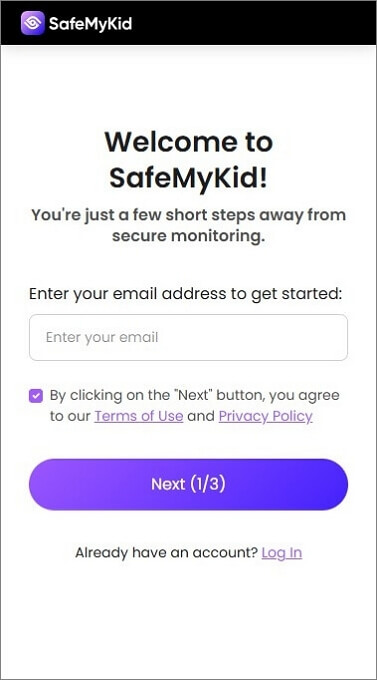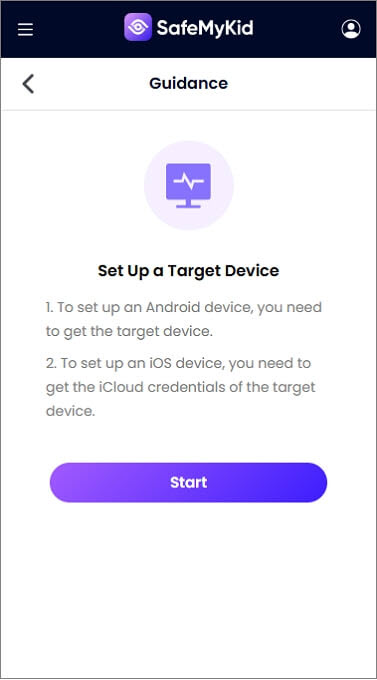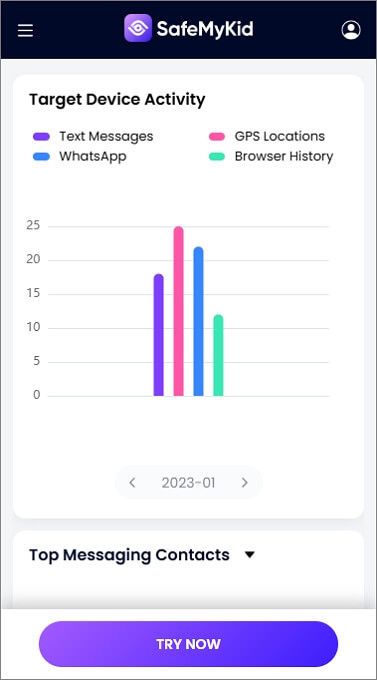Is Anyone Tracking My Phone - Top Solutions That Work

Is anyone tracking my phone? This question has become increasingly common as smartphone monitoring technology becomes more sophisticated and accessible. Understanding how to find out if anyone is tracking my phone is essential for protecting your digital privacy.
![]()
Smartphone tracking can range from basic location monitoring to comprehensive surveillance of calls, messages, and online activities. While some tracking occurs with legitimate consent, it represents a serious privacy violation that requires prompt identification and resolution.
Understanding Smartphone Tracking Technology
Before identifying potential monitoring, it's important to understand how modern phone tracking technology works and the various methods someone might use to monitor your device.
Contemporary smartphone surveillance employs various techniques to access your personal data and activities:
- Tracking apps installed directly on your device that run in the background
- Remote monitoring through cloud services and account access
- Network-based interception of communications data
- Physical tracking devices that monitor location
These different approaches create unique patterns and signs that can help identify if your phone is being monitored. By understanding these technologies, you can better recognize potential surveillance indicators and take appropriate action to protect your privacy.
6 Methods to Detect If Someone Is Tracking Your Phone
There are several approaches that can help determine if your phone is being monitored. Here are six effective methods to check if anyone is tracking my phone.
1. Check for Unusual Battery Drain
![]()
Tracking applications typically operate continuously in the background, consuming significant power resources even when your phone is idle. This constant activity often results in noticeably faster battery depletion compared to your device's normal performance patterns.
Pay particular attention to situations where your fully charged battery drops dramatically without corresponding usage or when your phone becomes unusually warm during idle periods.
These thermal and power anomalies often provide the first indication of background tracking processes consuming resources without your knowledge.
Pros:
- Requires no technical knowledge or special tools
- Immediately noticeable without a detailed investigation
- Can be monitored easily over time for patterns
- Often reveals even sophisticated tracking software
Cons:
- May have alternative explanations like an aging battery
- Weather conditions can affect battery performance
- Recent app installations might cause similar symptoms
2. Monitor Data Usage Patterns
Tracking software regularly transmits collected information to remote servers, creating detectable patterns in your data usage statistics. Unexplained data consumption, particularly during idle periods or overnight, often indicates unauthorized monitoring activity.
Review your data usage statistics through your phone's built-in tools or carrier reporting. Look specifically for background data usage from unfamiliar applications or system processes, as well as consistent data transmission patterns when you're not actively using your device.
Pros:
- Provides concrete numerical evidence of unusual activity
- Most phones have built-in data monitoring tools
- Can identify specific applications consuming background data
- Often reveals even stealth tracking applications
Cons:
- Requires regular monitoring to establish patterns
- Some legitimate apps also use background data
- Advanced tracking tools may disguise data usage
3. Look for Unusual Device Behavior
Smartphones under surveillance often exhibit distinctive behavioral anomalies as tracking software interferes with normal operations. These signs include unexpected restarts, delayed shutdown, interference during calls, or the screen lighting up when not in use.
Pay attention to unusual text messages with random characters or codes that arrive unexpectedly, as these sometimes contain tracking software commands.
Also watch for the camera or microphone activation indicators appearing briefly without your initiation, which might indicate remote surveillance.
Pros:
- Obvious signs that don't require technical expertise
- Multiple behavioral changes often confirm tracking
- Can reveal even sophisticated monitoring systems
- No special tools are needed for observation
Cons:
- Some behaviors may result from software bugs
- Operating system updates can cause similar symptoms
- Requires consistent observation over time
4. Use Dedicated Anti-Spyware Applications
Specialized anti-spyware applications designed specifically for mobile devices can detect many common tracking tools through comprehensive system scanning. These security-focused apps examine installed applications, permission settings, and system processes to identify potential surveillance software.
Most quality anti-spyware solutions provide detailed reports about potential threats, suspicious applications, and unusual system configurations that might indicate tracking. Many also offer removal tools to eliminate discovered monitoring software and secure your device against future installations.
Pros:
- Automated scanning requires minimal technical knowledge
- Can detect hidden applications not visible in app drawers
- Often identify tracking tools disguised as legitimate apps
- Regular updates to detect new surveillance methods
Cons:
- Free versions may offer limited detection capabilities
- Some sophisticated tracking tools evade basic scans
- Potential false positives requiring further investigation
5. Check for Unfamiliar Applications
![]()
Manually reviewing all installed applications can reveal tracking software that doesn't effectively hide its presence. Look through your complete application list, including system apps and disabled applications, for anything unfamiliar or suspiciously named.
Pay particular attention to applications with vague names like "System Service", "Update Service", or "Security Tool" that don't clearly state their purpose.
Also, investigate any applications you don't remember installing or that reappear after deletion, as these behaviors strongly suggest unwanted tracking software.
Pros:
- Directly identifies many basic tracking applications
- No additional tools or software required
- Can reveal tracking apps disguised as system utilities
- Gives you direct control over installed applications
Cons:
- Sophisticated tracking software may hide from app lists
- System applications can be difficult to identify as legitimate
- Requires some knowledge of standard phone applications
6. Perform a Factory Reset
When other detection methods prove inconclusive but tracking concerns persist, a factory reset represents the most definitive solution for removing most forms of surveillance software.
This process returns your device to its original state, eliminating all installed applications and their associated data.
Before performing a factory reset, ensure you've backed up all important information as this process will permanently delete all content on your device.
After resetting, carefully monitor your device for any returning symptoms, which might indicate more persistent tracking or account-level surveillance that survived the reset.
Pros:
- Eliminates most forms of tracking software completely
- Provides a fresh start with a clean operating system
- Removes hidden applications not detectable by scans
- Requires no technical expertise to implement
Cons:
- Erases all data and applications from your device
- Time-consuming to restore necessary applications
- Doesn't address cloud-based or account-level tracking
SafeMyKid - The Best Phone Tracker for Legitimate Monitoring

While this article focuses on detecting unwanted tracking, there are legitimate scenarios where you might need to track a phone with proper authorization.
SafeMyKid stands as the most reliable and comprehensive phone tracker when you need authorized monitoring capabilities for parental supervision, family safety, or device recovery.
SafeMyKid's sophisticated tracking technology provides powerful monitoring features while maintaining ethical standards and respecting privacy laws.
Unlike questionable tracking tools, SafeMyKid operates with transparency and emphasizes legitimate use cases like family safety, child protection, and authorized device monitoring.
Why SafeMyKid is The Superior Phone Tracking Solution
For authorized tracking needs, SafeMyKid offers industry-leading capabilities that outperform other monitoring solutions:
Real-Time GPS Tracking - Monitor exact location with pinpoint accuracy and continuous updates for comprehensive location awareness.
Geofencing Capabilities - Create virtual boundaries with instant alerts when the monitored device enters or leaves designated areas.
Stealth Monitoring Option - When legally authorized, tracking can operate discreetly in the background without visible indicators.
Communication Monitoring - View calls, messages, and social media activity across multiple platforms for comprehensive supervision.
Remote Control Features - Lock, wipe, or trigger alerts on monitored devices in emergency situations or if stolen.
Historical Data Access - Review past location history, communications, and digital activities for pattern analysis and security assessment.
Multi-Device Compatibility - Works across various device types including iOS and Android smartphones and tablets.
User-Friendly Dashboard - The intuitive interface provides easy access to all tracking data through a secure online portal.
Regular Feature Updates - Continuous improvement ensures the tracking technology remains effective despite operating system changes.
How to Setup SafeMyKid for Authorized Phone Tracking
Setting up SafeMyKid for legitimate phone monitoring is straightforward and ensures proper authorization throughout the process.
Step 1. Create a SafeMyKid Account
Visit the official SafeMyKid website to register and establish your authorized monitoring account.

Step 2. Set up The SafeMyKid on Target Device
For Android: Install the application directly on the device with proper authorization from the device owner.
For iOS: Use iCloud credentials with permission to enable remote monitoring capabilities.

Step 3. Access The SafeMyKid Phone Tracking Dashboard
Log in to your secure SafeMyKid account to view location data, communications, and digital activities of the monitored device.

Physical Signs Someone Placed a Tracking Device on Your Phone
Beyond software solutions, it's important to check for physical tracking modifications that might have been added to your device if you're concerned about how to find out if anyone is tracking your phone:
Unusual Physical Alterations - Examine your phone case and battery compartment (if accessible) for unfamiliar components or modifications.
Aftermarket Battery Bulging - Check if your battery appears unusually bulky or misshapen, which might indicate a physical tracking device.
Case Tampering Evidence - Look for scratch marks around seams or screws that suggest someone opened your device.
Extra Antennae or Components - Inspect your phone for any additional wires, components, or unfamiliar hardware elements.
SIM Card Manipulation - Verify your SIM card hasn't been replaced or tampered with, as some tracking methods use modified SIM cards.
Physical tracking requires direct access to your device, so this method is less common than software-based monitoring but still worth investigating, particularly if you've noticed suspicious physical changes to your phone.
How to Remove Tracking Software from Your Phone
Once you've confirmed your suspicions about unwanted monitoring, these steps will help secure your device:
- Update Operating System- Install the latest OS updates, which often patch security vulnerabilities exploited by tracking software.
- Remove Suspicious Applications- Uninstall any unfamiliar or suspicious apps identified during your investigation.
- Revoke Suspicious Permissions- Review and restrict permissions for all applications, particularly access to location, contacts, microphone, and camera.
- Change All Passwords- Update passwords for your device, email accounts, social media, and other services that might provide backdoor access.
- Enable Two-Factor Authentication- Add this additional security layer to prevent unauthorized access to accounts connected to your phone.
- Check Account Logins- Review all devices currently logged into your accounts and remove any that are unfamiliar.
- Consider Professional Help- If tracking persists despite your efforts, consider having your device examined by a security professional.
These steps address the most common tracking methods, though particularly sophisticated surveillance might require additional measures or professional security assistance.
Frequently Asked Questions about Phone Tracking
Here are answers to common questions about identifying and addressing unwanted phone monitoring:
1. Can someone track my phone without installing any apps?
Yes, tracking can occur through cloud account access, network-level monitoring, or exploitation of security vulnerabilities without direct app installation. These methods are harder to detect but often require either your account credentials or sophisticated technical knowledge to implement.
2. Will a factory reset remove all tracking software?
A factory reset eliminates most tracking applications but won't address cloud-based monitoring or hardware modifications. After resetting, secure your accounts with new passwords, enable two-factor authentication, and remain vigilant for returning symptoms that might indicate more persistent tracking methods.
3. Can my phone be tracked if it's turned off?
Generally, a powered-off phone cannot transmit location or activity data. However, sophisticated tracking might make your phone appear off while actually remaining in a low-power state that permits monitoring. Physical tracking devices attached to your phone case might also operate independently of your phone's power state.
4. Is my employer allowed to track my phone?
If you're using a company-owned device, employers typically have legal rights to monitor its usage. However, this monitoring should be disclosed in company policies. For personal devices, employers generally need your consent to install tracking software, though specifics vary by jurisdiction and employment agreements.
5. How often should I check my phone for tracking software?
Regular security checks are advisable, particularly after lending your phone to others or noticing unusual behavior. Establish a monthly security routine that includes reviewing installed apps, permission settings, and battery performance to catch potential issues early.
Conclusion
Answering the question "Is anyone tracking my phone?" requires attention to multiple indicators and a systematic approach to detection. By using appropriate security tools, you can identify potential surveillance and take steps to protect your privacy.
Remember that while individual warning signs might have innocent explanations, multiple indicators appearing together warrant thorough investigation.

